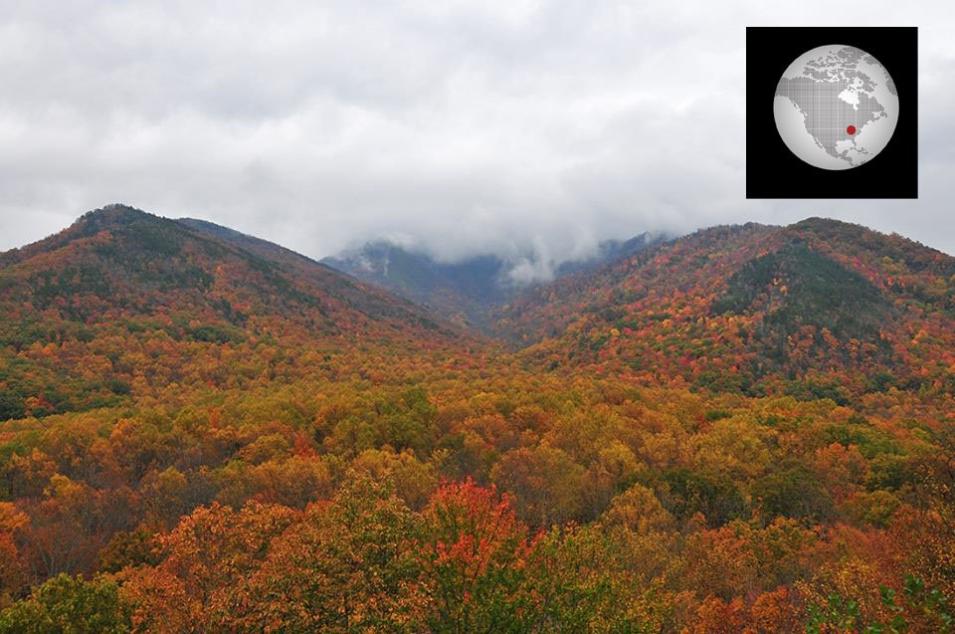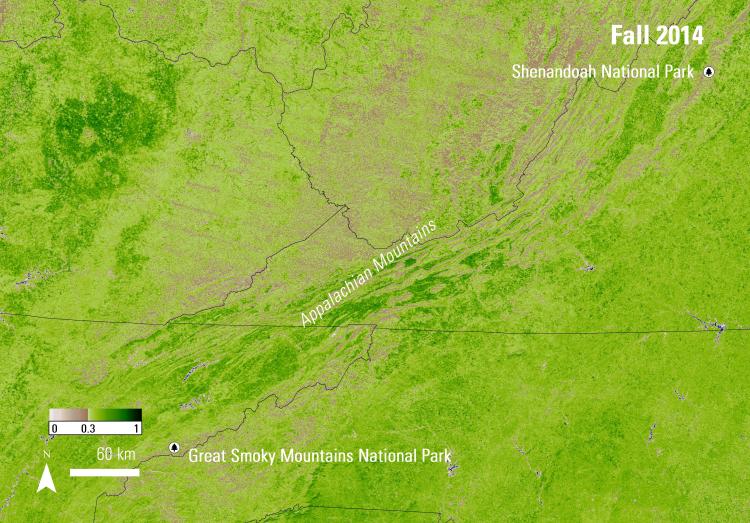Introduction
Autumn in the eastern United States forests is an amazing color show that attracts sightseers world-wide. Factors including tree diversity, day length, and weather come into play for making this region a popular destination for viewing fall foliage. Favorite spots for “leaf peepers” to experience the autumn splendor include Shenandoah National Park, Blue Ridge Parkway, and Great Smoky Mountains National Park, which are all located along the Appalachian Mountain range.
The Appalachian Mountains are covered in a wide-variety of native deciduous tree species. The color of fall foliage depends on the tree species and the mixture of pigments in the leaf. There are three main pigments that give leaves their color and include chlorophyll, carotenoids, and anthocyanins. In spring and summer chlorophyll is the pigment that gives leaves their green color. At the end of summer, the decreased daylight and cooler temperatures, cause chlorophyll to break down, which expose the carotenoid (yellow, orange, and brown) and anthocyanin (red, purple, and crimson) pigments. Weather plays an important role in defining the richness of fall colors. A succession of warm, sunny fall days, followed by cool crisp, above freezing nights produce the most vibrant viewing conditions.


